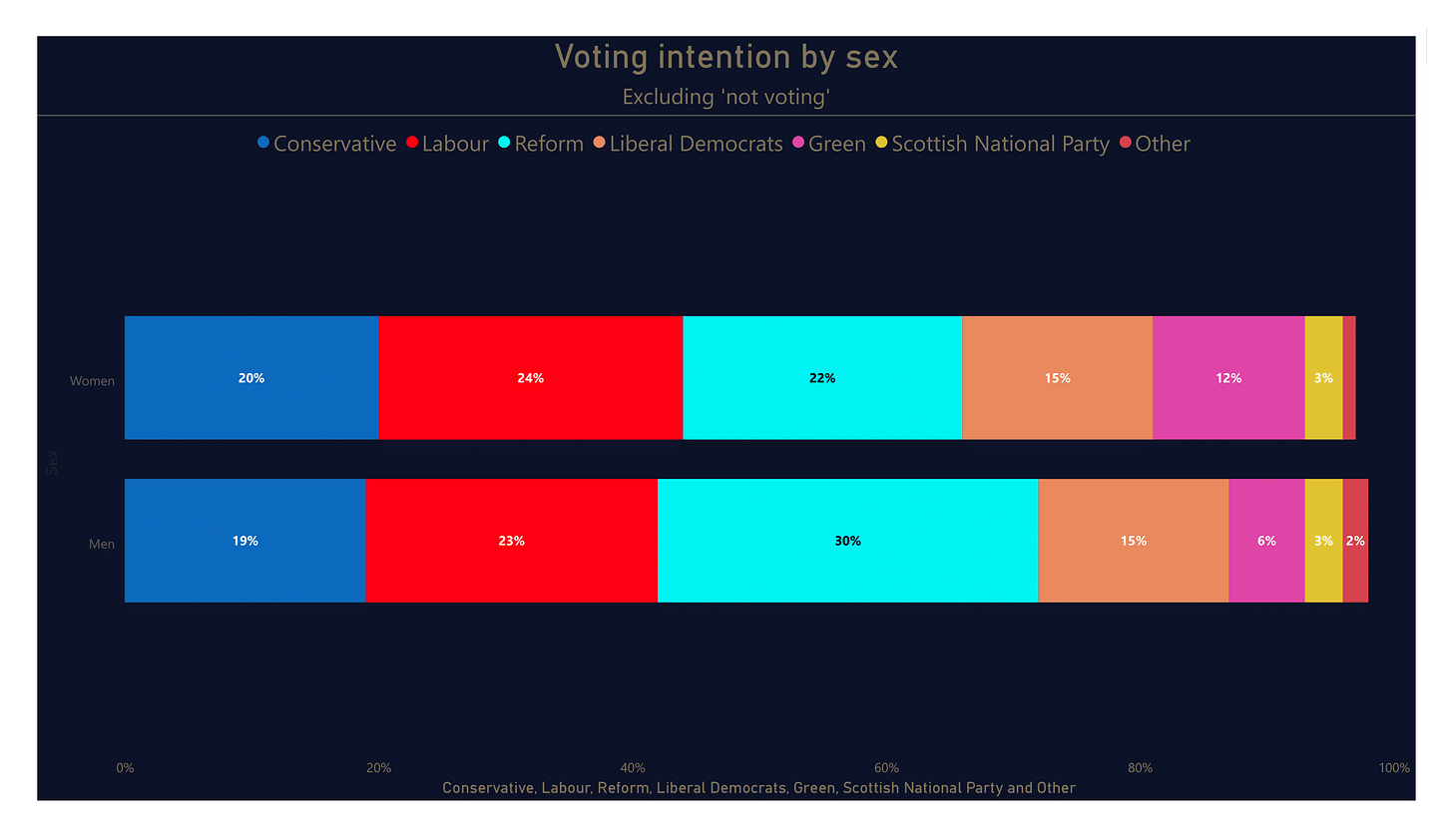Pollster: YouGov
Sample size: 1,691
Fieldwork dates: 28th April 2025
Source
Key points
Reform has overtaken the Conservatives amongst women, for the first time. It may be a decisive shift.
The Conservatives would fall below 100 seats, and it could be forever.
But Reform are splitting the unionist vote in Scotland, providing grounds for a nationalist resurgence.
Support for parties that the electorate considers more left wing (also taken from data produced by YouGov) is slipping, while Reform is making ground and, for the first time with YouGov, is likely to form the largest party. What is more interesting is, based on regional trends with both the Conservatives and Labour falling behind in their core regions (see below), this would cause the Labour Party to collapse, whilst the Tories would practically disappear… with fewer than 70 seats.
What would this parliament look like?
Electoral Calculus puts Reform as the largest party by a significant margin:
Because of parliamentary arithmetic, even though the Tories would take 5% more of the vote than the Liberal Democrats, they would actually end up with fewer seats (68 to 69). The three main parties of Parliament would, therefore, be Reform, Labour, and the Liberal Democrats. The only viable option to form a government here would be a coalition led by Reform and propped up by the Conservatives.
The resurgence of the nationalists in Scotland is an ongoing trend, with the SNP now polling more than the Conservatives and Labour combined, with Reform seriously sapping the Tories from the right flank and the Greens undermining Labour from the left. The increasing polarisation and radicalisation of British politics - especially at the fringe - is obviously going to have serious consequences for the future of the Union.
Meanwhile Reform continue to perform better than both traditional parties in the Midlands and the North, except now they’re breaking through in the South as well. YouGov does aggregate categories a little more than other pollsters, so certain trends are obscured, but in this case the collapsing support for the traditional parties in their homelands complicates the simple narrative that Reform is a threat only to the Tories.
Over half of young voters (56%) are supporting parties they perceive to be on the Left, with Labour and the Greens taking 36% and 20% of the 18-24 range respectively. Meanwhile older voters are drifting further right, indicating a long-term and potentially permanent shift to the Left in British politics. As I say above, YouGov’s polling aggregates categories, so the broad category of 25-49 is a lot wider than other pollsters, and the voting pattern of younger millennials is harder to read.
One absolute stand-out result though is that, for the first time I’ve seen, Reform is polling higher amongst women (22%) than the Conservatives (20%). This is where the opportunity has been for Reform to cement their lead over the other main parties, if it can seriously win over women voters, especially younger women.
Thank you for reading this short Poll Watch post, in which I look at and discuss the most recent public opinion survey. Please consider subscribing to and sharing this blog and, if you’re feeling particularly generous, subscribing to my paid content -(detailed research and policy proposals).






